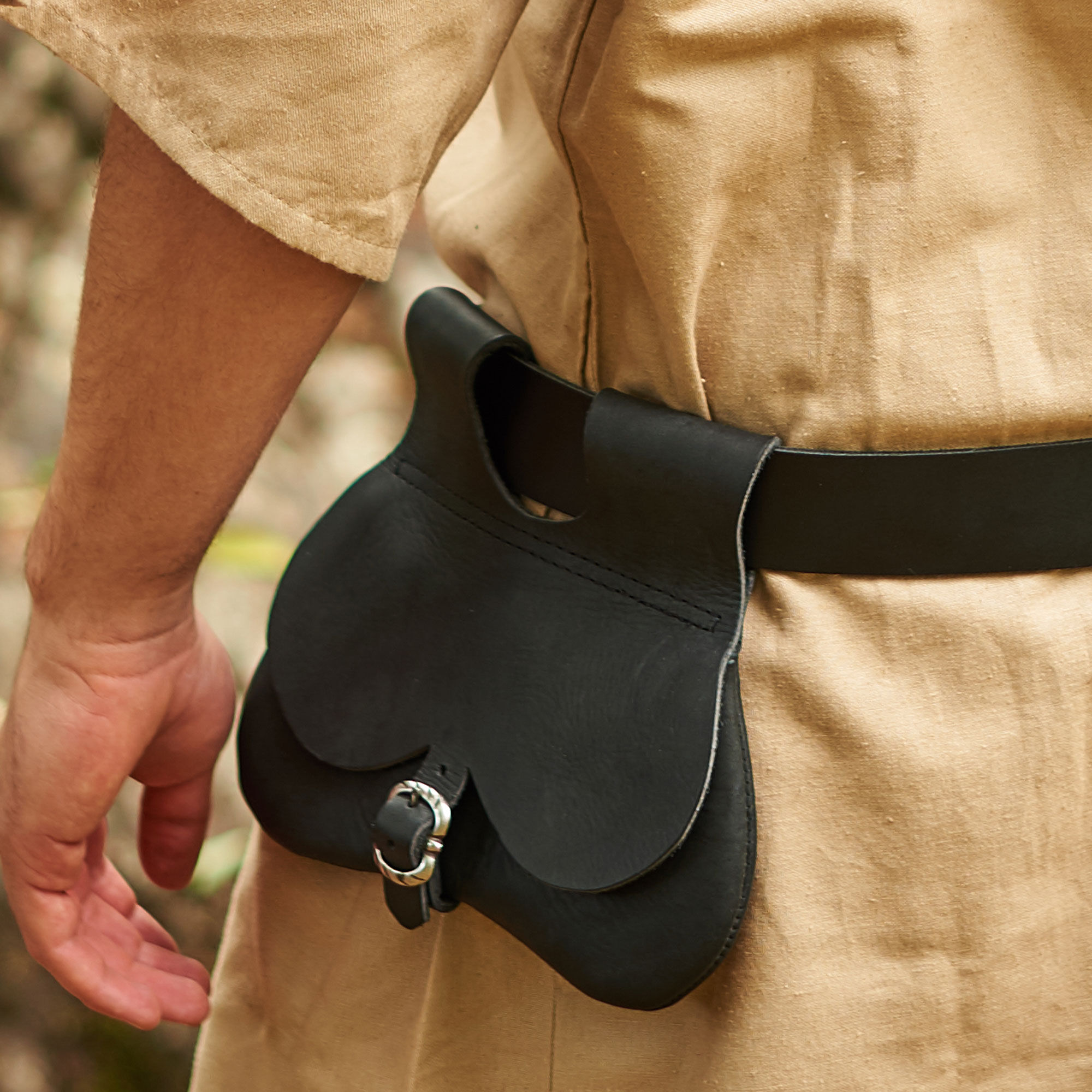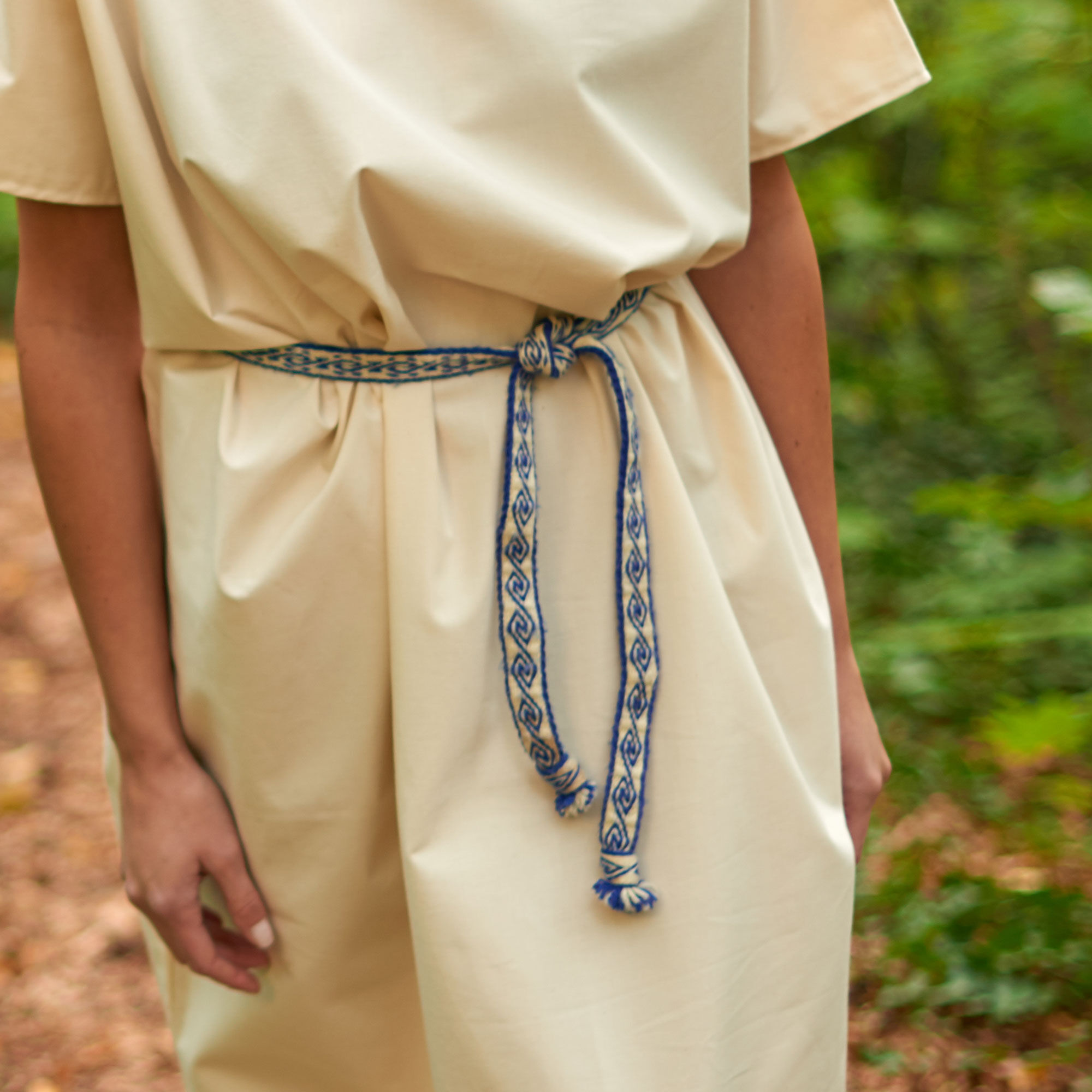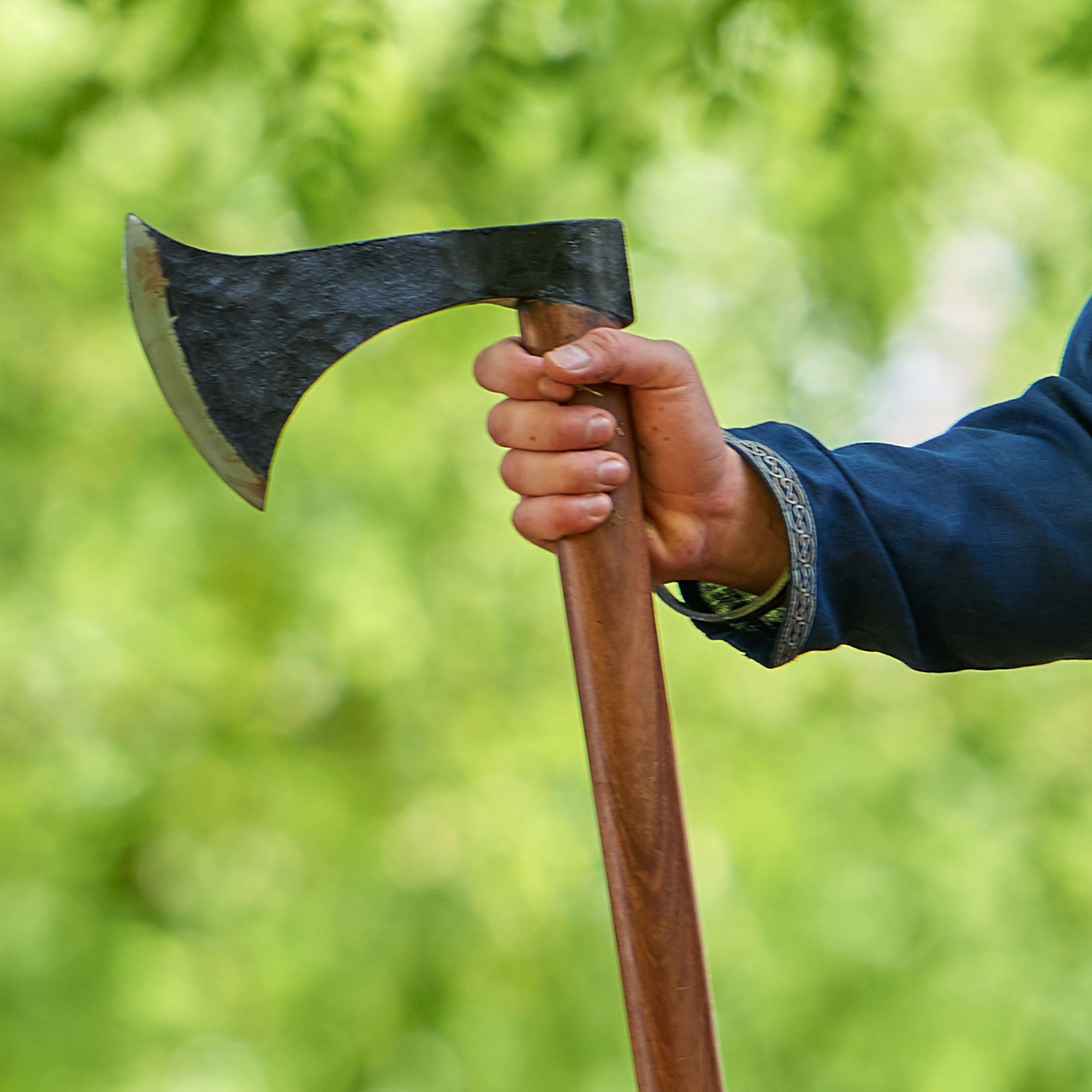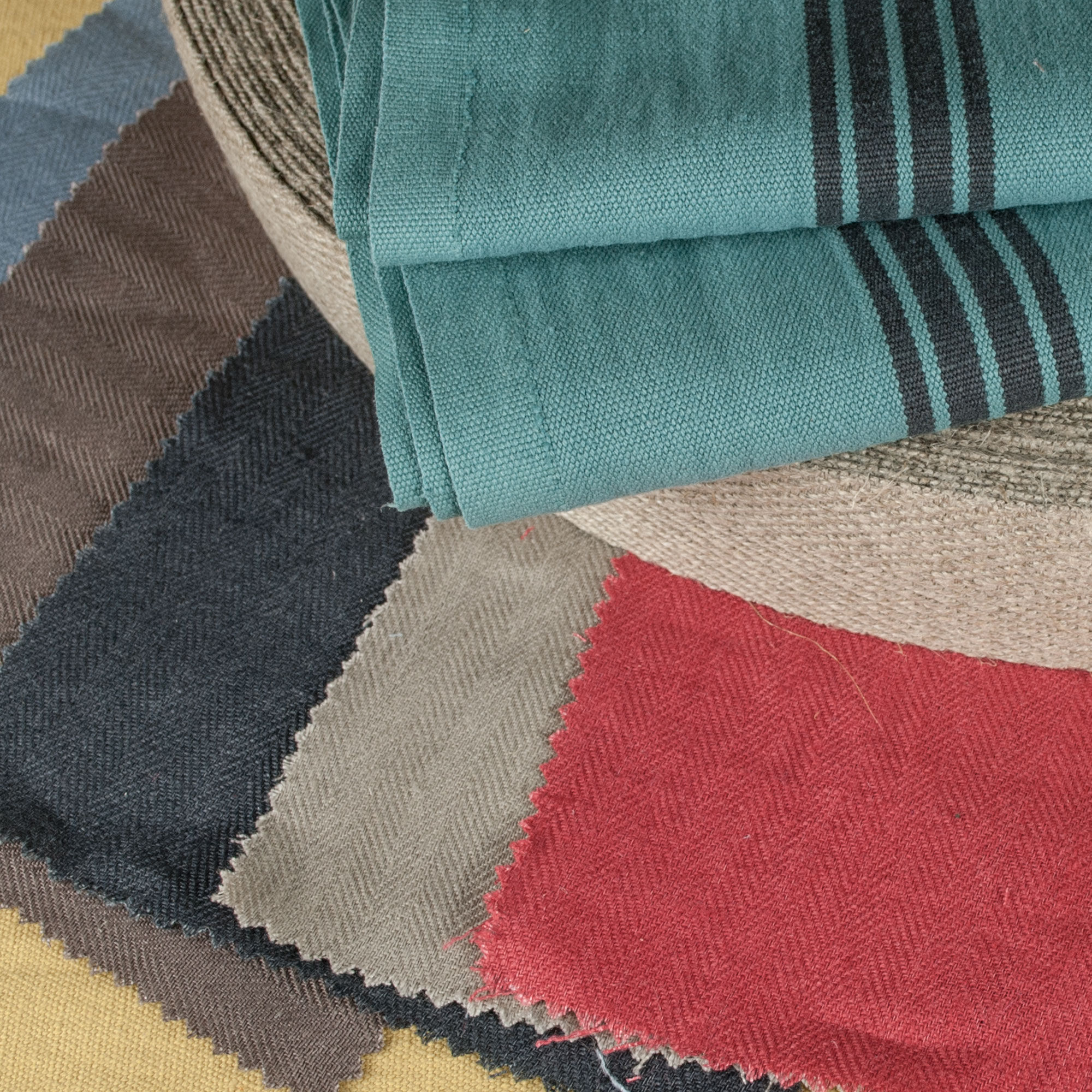Clothing & shoes
Roman Shoes & Roman Clothing
The following pages of the Roman Shop offer a wide range of Roman shoes and clothing.
Roman clothing
Jewellery, medical accessories and utensils on the theme of beauty: handmade running shoes made of naturally treated cowhide in many sizes, symbolic pendants in silver and bronze, earrings and fancy yet simple link necklaces, doctor's sets including tweezers and scalpel and other high-quality medical utensils as well as filigree bronze or silver hair jewellery decorated according to Roman models can be found under the heading "The Roman - The Roman Woman".
Roman shoes
Soft leather hugs the foot comfortably. All models of Roman lace-up shoes on the Roman Shop pages are made of naturally treated, vegetatively tanned, very durable cowhide. The Roman sandals are made to an ancient pattern. They fit your foot like a second skin. A wonderful feeling when walking: like going barefoot, but with protection and good support!
What's more, Roman sandals are all the rage this summer - literally!
Roman shoes for home and out
However, the Romans usually wore two different types of shoes, both men and women. The Romans did not have winter shoes, summer shoes, day shoes, evening shoes or slippers in the modern sense of the word. There were, however, shoes for the home and shoes for the street. Inside the house, with themselves or with others, the Romans wore soleae. These were sandals held together by thin leather straps that could also be worn between the toes. As they were only worn indoors, it was the job of slaves to carry the soleae of their masters into the house where they had been invited to a banquet. The Romans thought it was very clumsy for someone to leave the house in their soleae.
Street shoes with the toga
Calcei were the real shoes of Roman citizens. These were the shoes they wore with their toga. These Roman street shoes were made of leather strips held together by a leather tongue with a buckle, which also decorated the Roman shoes.
In Roman society, it was important that, at least on official occasions, a person's status and social class were immediately apparent to others. Depending on the social position or office, the wearer was provided with different clothing. These changed as the person moved up or down the social ladder. Wool and linen were the most common materials, but silk was also used in rare cases. The latter, however, was reserved for the richest families. Similarly, the quality of clothing increased with the status of the wearer.
Men's underwear
A well-known form of underwear was the subligares, a kind of loincloth. However, they were not often worn under a tunic. Subligares were more likely to have been worn by workers or slaves. If it was too cold, the Roman would protect himself with a leg warmer (fascia) or a chest protector (thorax). Alternatively, several tunics were worn on top of each other. Augustus, for example, is known to have worn up to four tunics on top of each other in winter. Wearing trousers under the tunic was not common among the Romans.
The tunic
In ancient Rome, the tunic was a very universal garment. It was usually knee-length for men and ankle-length for women. It was also worn slightly shorter or longer. The tunic consisted of two rectangular pieces of fabric sewn together with the necessary cut-outs for the arms and neck. It was usually belted at the waist. An ungirded tunic was considered unseemly. In the third century BC, the first tunics with sleeves down to the wrists appeared. Before that, the wearer of such a garment was considered rather effeminate. Another fashion trend emerged in the early imperial period. The sleeveless tunic was replaced by the short-sleeved tunic. Only in the Praetorian Guard did the sleeveless tunic remain part of the standard uniform. Two thin purple stripes (augustus clavus) on the shoulders marked those of knightly rank; two thicker stripes (latus clavus) were reserved for those of senatorial rank. A special type of tunic was the palmata tunic. This was embroidered with palm trees and was reserved for the commander. He wore it during his triumphal procession through Rome.
The toga
Anyone who wanted to hold public office in Rome had to wear the traditional garment, the toga, over the tunic. Only those with full Roman citizenship were allowed to wear a toga. The ordinary Roman wore a white wool toga (toga alba) and a dark one (pulla) in times of mourning. The members of the higher magistracies (aediles, praetors, censors and consuls) and the members of the priestly colleges (pontifices, augurs, epulones and quindecemviri) each wore a toga (toga praetexta) edged with a purple stripe about 75 millimetres wide. Boys wore a similar toga until they reached the age of majority, except that the stripe was slightly narrower. Candidates for state office wore a bright white toga (toga candida). A victorious general wore a gold-trimmed upper garment. After all free citizens of the empire were granted Roman citizenship in the third century AD, the toga lost its importance. Its main function, to identify a free Roman citizen, was no longer relevant. In late antiquity, the wearing of the toga became increasingly rare. Only in some state offices and solemn ceremonies was the toga still part of Roman dress until the 6th century.
Women's underwear
Under the tunic, Roman women wore the strophium, which is roughly equivalent to a brassiere today. It consisted of a leather band that was wrapped around the breasts to protect them. Trousers, such as the subligares, were generally not worn by women unless they were taking part in sporting events. Combined with the strophium, it looked like a modern bikini. However, this type of Roman clothing was only necessary if a tunic was not worn over it.
The stole
The stole was worn over the tunic by married matrons. This woollen garment, full of folds, consisted of a length of fabric as long as the span between the outstretched arms. If necessary, the stole could be belted, but this was not always the case. Because of its voluminous fabric and length, the stole was considered uncomfortable to wear. Women could only walk slowly in it. However, the stole also expressed the pride of a married Roman woman, as well as her respectability and sense of tradition. The stole was considered to be the appropriate attire for a Roman citizen.
The palla
Another Roman garment worn by women was the palla over the tunic or stole. A palla was a rectangular piece of cloth that could be draped over the head or over the shoulder. It could match the colour of the stole, but was not required to. The palla could also be used to cover the head. In general, a woman of the upper classes was not considered to be of proper status if she did not wear an appropriate head covering outside her own home.
The Romans and their everyday life - Strolling in Rome
The Romans and Roman Women section provides answers to these questions and invites you to take a stroll through Roman everyday life - because that is what the Romans liked to do: stroll and look at the goods on offer, taste, buy, see and admire and, of course, like to be seen, at best admired! In the jewellery section you can discover precious silver and bronze jewellery based on historical models. Filigree necklaces for fibulae and hairpins to add class and hold to hairstyles.
Diving into the Roman "treasure chest"
Collectors of antique Roman coins will also find something to love in the Romans and Romans section: the Roman Treasure Chest! Would you like a faithful replica of a sestertius? - Soft leather and silent soles are the hallmarks of Roman footwear. Roman sandals made from naturally treated cowhide are not only soft and comfortable, they are also a real summer hit! Cosmetics, body care and medical items are also included in the Romans and Roman Women category. The Romans attached great importance to a well-groomed, even artistic, shave, to depilation and, of course, to the care and design of their head hair. Tweezers or doctor's instruments also existed in the world of Romans and Roman women. Following the ancient example, these are ready to use!
Living spaces
Roman villas and living rooms invite you into a world of plants, culinary delights and intricate basketry and woodwork. Ornamental storage for money, jewellery or fruit: unique handmade wicker objects based on ancient designs or beech treasure chests... Artistically turned wooden bowls were used by the Romans in the kitchen or earthenware vessels such as honey pots. Based on antique models, these unique objects will decorate your kitchen.
The everyday life of the Romans and Roman women offers many imaginative ideas for collectors, lovers of antique treasures and designers of individual living spaces!
Again all categories for Roman Clothing & Shoes
Schools and authorities in DE can conveniently order on account. Private customers are welcome to use Ratepay purchase on account (Paypal service)
Safe and easy ordering within Germany from 75 €
Always new ideas and optimised products through our years of experience and intensive cooperation with schools and museums.





